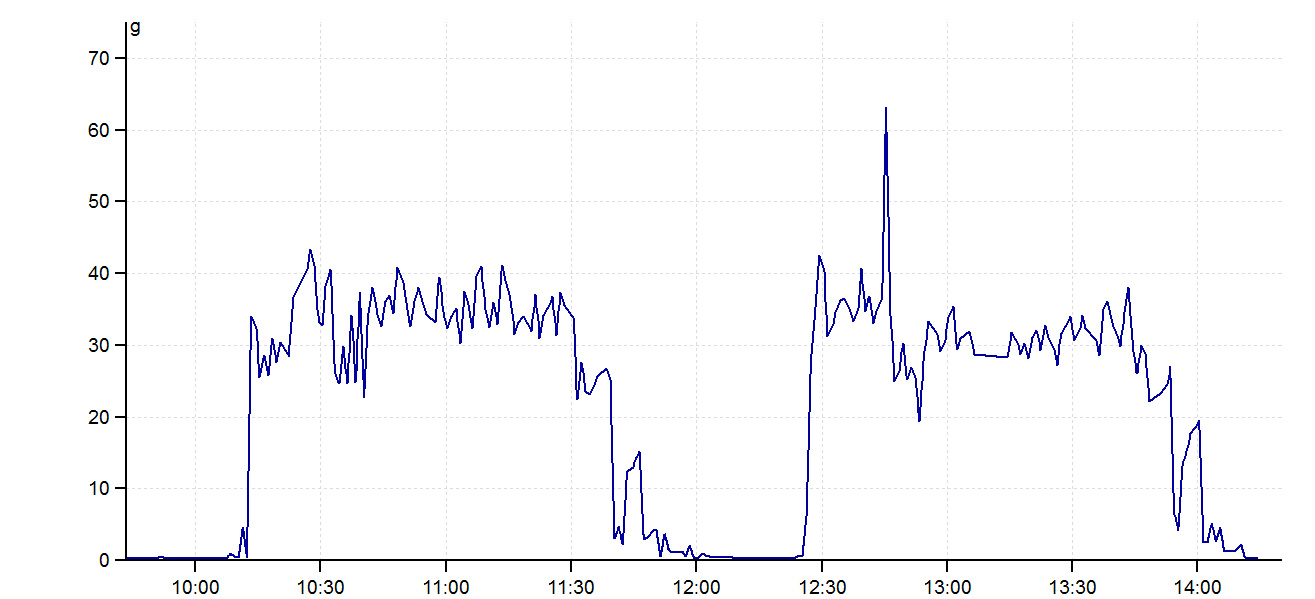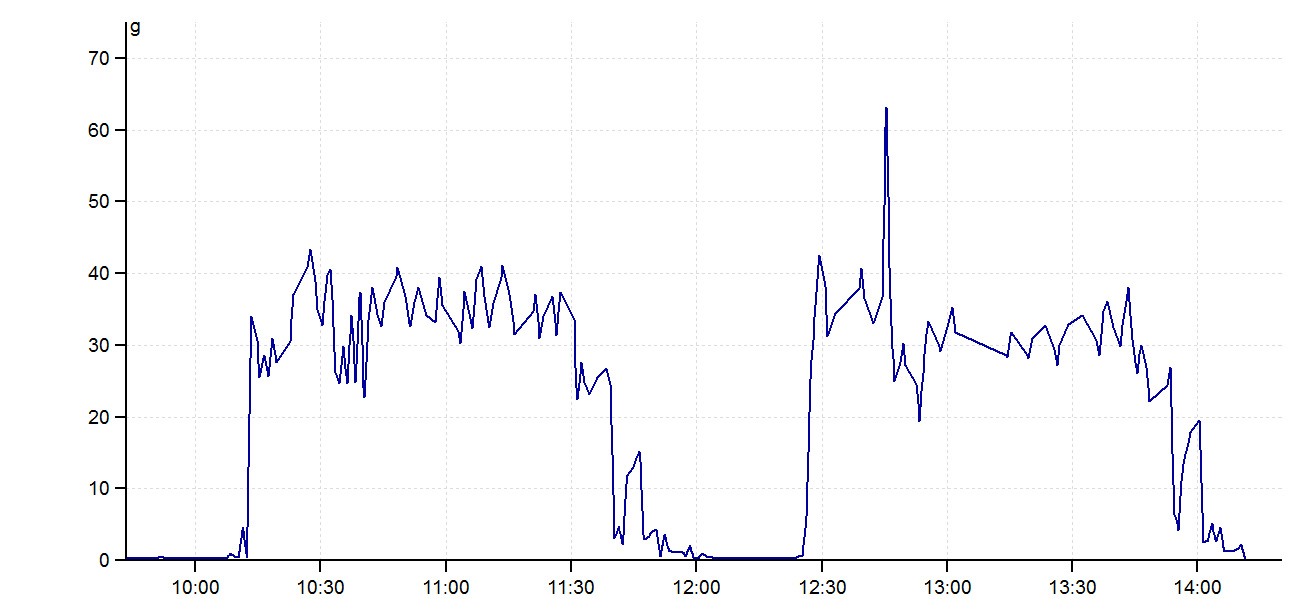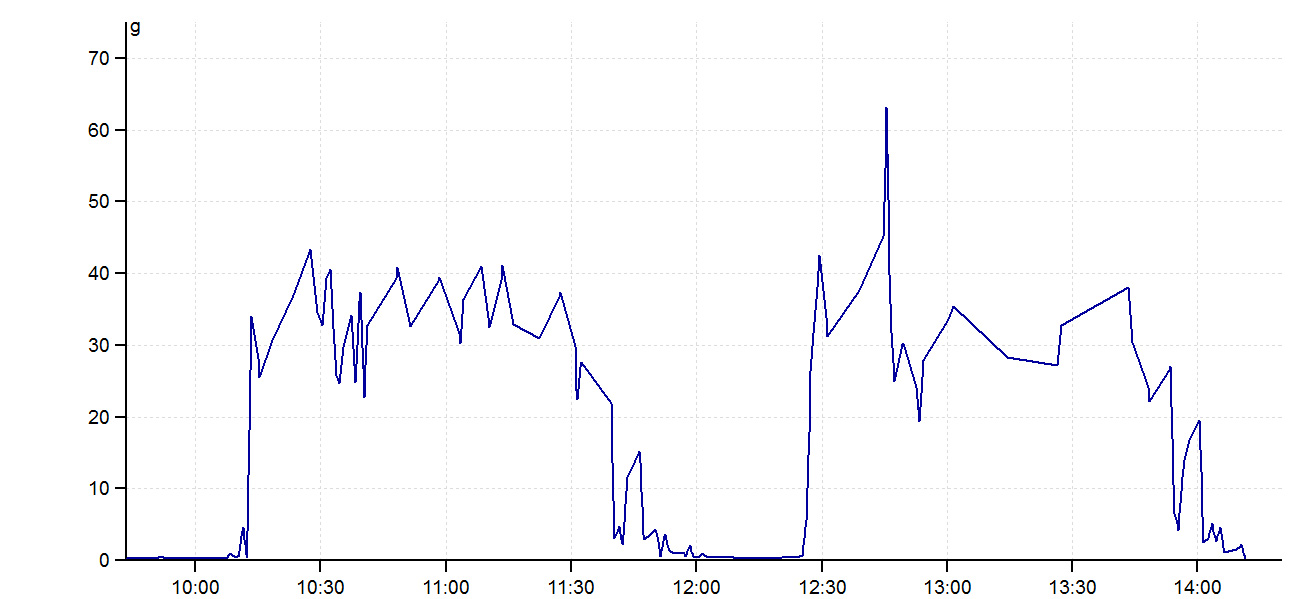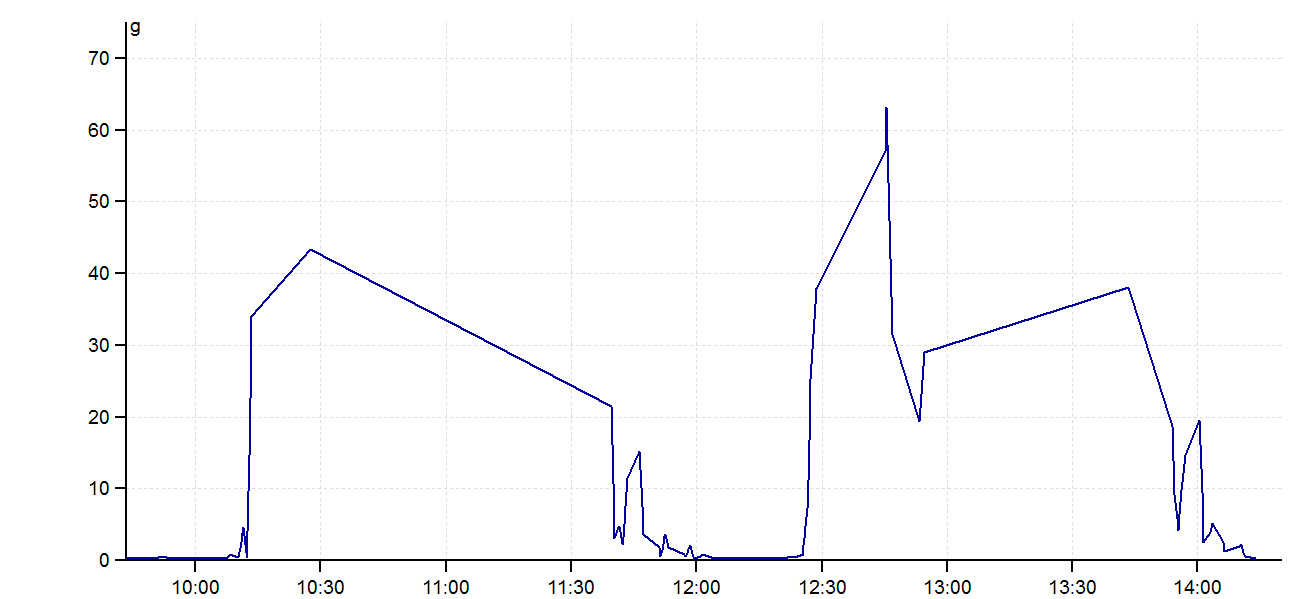Adaptive Algorithm of Data Acquisition
Conventional Model of Data Acquisition (used by various brands):
- Data was measured in defined time interval (e.g. every minute), so they were not measured continuously, so some important value changes in between those measurements have been lost
- Every measured data was saved, so the values with no information (same value as before) were saved and they took valuable space
Adaptive Algorithm of Data Acquisition (new Adash system):
- Data are measured continuously, so you cannot miss anything
- Only selected values are saved. If the measured value is not changing significantly, it is not saved. Adaptive Algorithm selects which data to save and which not.
NOTE:
The volume of possible data saved is highly reduced in this way, so it ensures that saved data cannot take too much space and the access to the database is not slowed down (otherwise it would be). There is no need to purchase expensive SQL servers. There is database solution provided in DDS software, which controls the A3716 units. You can run the database system on the standard laptop.
How Adaptive Algorithm selects which data to save and which not?
- Adaptive Algorithm measures data continuously and it does not save the values which do not change significantly. It saves only those values which changes from the previous one more than e.g. 5%, so if the measured value does not change significantly, the system does not save it.
- Only selected values are saved. If the measured value is not changing significantly, it is not saved. Adaptive Algorithm selects which data to save and which not.
NOTE:
No diagnostician needs the values with change with less than 5% recorded, see the pictures below.
- There is time interval for data saving determined, so if this interval is set to 1 hour and a values do not change significantly for e.g. 1 hour, it is saved after 1 hour anyway).
- Adaptive Algorithm can change some of its parameters on its own, so the data saving is optimized, e.g. for the process with very variable values it can increase the percentage value of significant change (e.g. from 5% to 10%) determining which measured values are saved. See the picture below how it affects acquired results.
All data saved:

Significant change = 5 %

Significant change = 10 %

Significant change = 20 %

Significant change = 50 %



